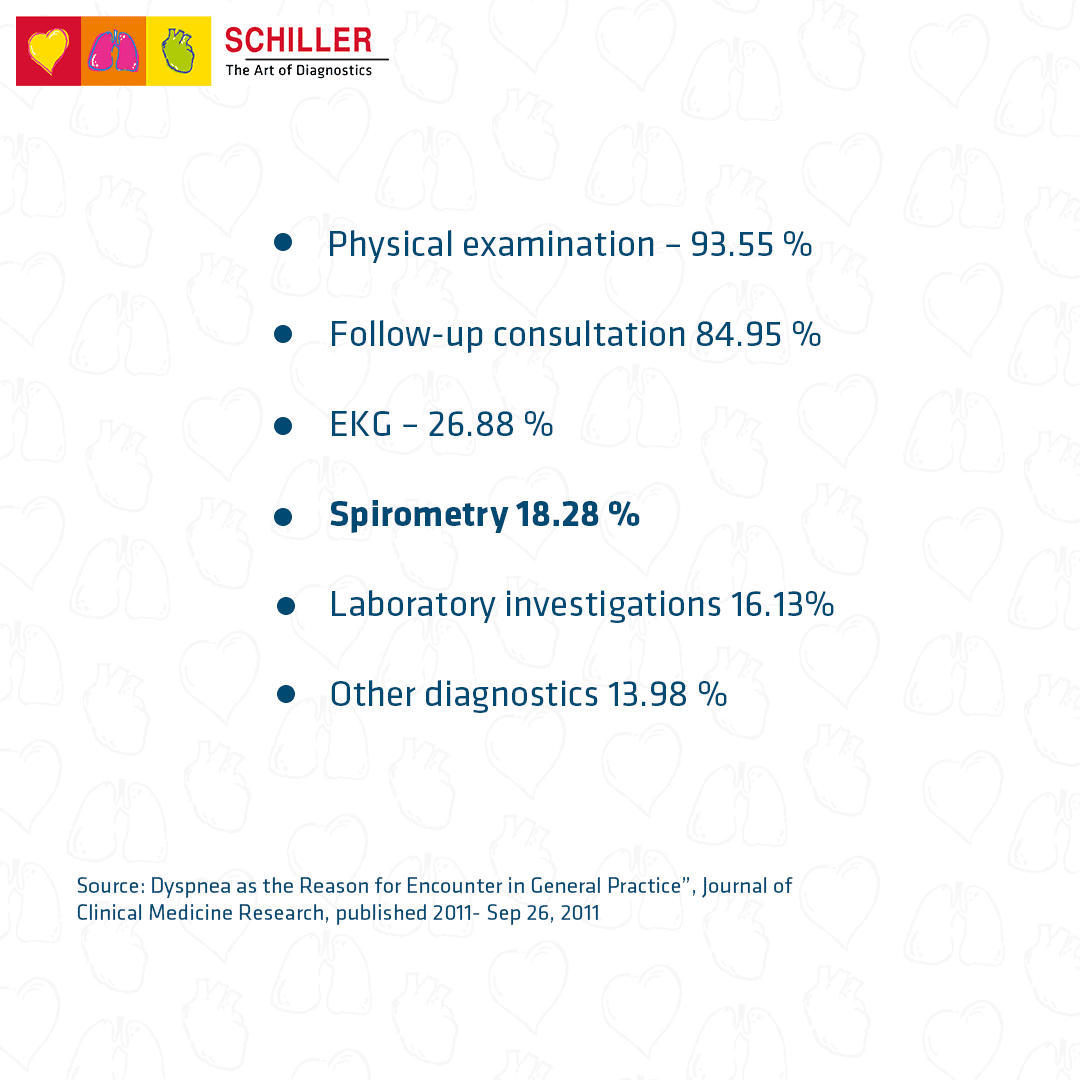Although dyspnea is a common reason for consulting a primary care physician (1 - 4% of all visits) pulmonary function tests are often overlooked and seldom performed. According to a study tested and evaluated during a pilot trial (Epidemiological Study in General Practice - SESAM 2) these were the actions in % taken by practitioners when patients arrived with known or new dyspnea:
According to that study, the most frequent therapeutic procedure was drug prescription, even though 84.9% of the results of the consultation were related to diseases of the respiratory tract (69.9%) or cardiovascular system (15%). In fact, in many cases the consultation result was acute bronchitis, followed by heart failure, chronic obstructive pulmonary disease (COPD), asthma, chronic bronchitis, pneumonia, and dyspnea itself. Most of those diseases could have been diagnosed (and therefore treated) earlier if practitioners did not underestimate spirometry on dyspneic patients.
When to perform a spirometry?
Diagnostic
To evaluate symptoms or abnormal laboratory tests * To measure the effect of disease on pulmonary function * To screen patients at risk of pulmonary disease
Monitoring
To assess therapeutic intervention * To monitor individuals exposed to harmful agents
* To monitor adverse reactions to drugs with known risk of pulmonary effects
Disability / impairment evaluation
To assess patients as part of rehabilitation program * To assess risks as part of an insurance evaluation or for legal reasons
Public health
Epidemiology surveys * When there is a condition that affects a community (i.e leaks or spills of toxic substances) * Clinical research
Usability criteria of spirometry
The quality of spirometry tests performed in primary care is high if the practitioner uses a device like SpiroScout, our ultrasonic spirometer. However, that is just half of the equation: spirometry incorrectly performed or interpreted can lead to misdiagnosis. Therefore, it is necessary to take into account these steps to determine the usability of spirometry:
SpiroScout Spirometer
This device is an ultrasonic solution for the diagnosis of obstructive and restrictive pulmonary disease. Among other, it has the following characteristics:
* Calibration-free
* Hygienic disposable mouthpiece
* Keeps you at safe distance from patient
* Easy to use
* Portable
* Adult, pediatric & neonate
* FVC, SVC & MVV standard measuring
* ATS, ERS & OSHA compliant
* LFx software that allows to zoom-in into any part of the respiratory curve
Be prepared, Be safe, Be ready with SpiroScout!
Sources of this article:
https://www.ncbi.nlm.nih.gov/pmc/articles/PMC3279485/




